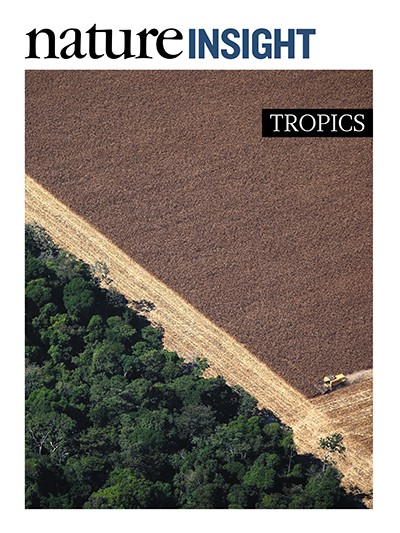
Credit: Rodrigo Baleia
The tropics are home to a dizzying array of species, store vast quantities of carbon, drive year-to-year climate variability, and will soon be home to half of the world’s population. In this Insight, we explore some of the scientific and societal challenges posed by the tropics, and some of the solutions being devised.
Mosquito-borne diseases, such as dengue and malaria, are a major cause of morbidity in the tropics. Neil Ferguson examines how new interventions offer hope of reducing disease burden, but only if supported by rigorous trials and epidemiological analyses.
Ian Gilbert and colleagues explore the challenges associated with developing new drugs to tackle infectious tropical diseases such as malaria and tuberculosis. Recent progress shows that headway can be made with the concerted efforts of all stakeholders.
Non-communicable diseases, such as heart disease and cancer, are often considered a problem of the wealthy. Majid Ezzati and colleagues show that these diseases cause more deaths in low- and middle-income tropical countries than in high-income Western countries.
The tropics harbour more than three-quarters of all species. Jos Barlow and colleagues review the vulnerability of this hyperdiversity to mounting local and global stressors. Only through coordinated local, national and international action can a collapse of tropical biodiversity be prevented, they argue.
In a Review of the tropical forest carbon budget, Edward Mitchard suggests that tropical forests are probably in the process of switching from making an approximately neutral contribution to the global carbon cycle to becoming a net carbon source.
The tropics also set the stage for the El Niño–Southern Oscillation system. Axel Timmermann and colleagues synthesize the complexity of this system, and argue that its variability is excited by a wide range of mechanisms, many of which depend on climatic conditions.
The tropics are undergoing substantial social, environmental and climatic change. Whether an equitable, healthy and sustainable future can be forged, which fosters the region’s rich ecological inheritance and the environmental benefits it bestows, will depend on actions taken in the next few years.

 Challenges and opportunities in controlling mosquito-borne infections
Challenges and opportunities in controlling mosquito-borne infections
 Challenges and recent progress in drug discovery for tropical diseases
Challenges and recent progress in drug discovery for tropical diseases
 Acting on non-communicable diseases in low- and middle-income tropical countries
Acting on non-communicable diseases in low- and middle-income tropical countries
 The future of hyperdiverse tropical ecosystems
The future of hyperdiverse tropical ecosystems
 The tropical forest carbon cycle and climate change
The tropical forest carbon cycle and climate change
 El Niño–Southern Oscillation complexity
El Niño–Southern Oscillation complexity







